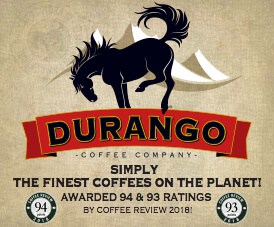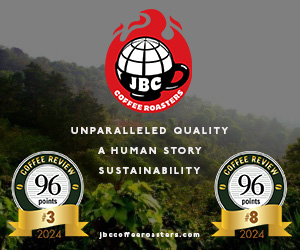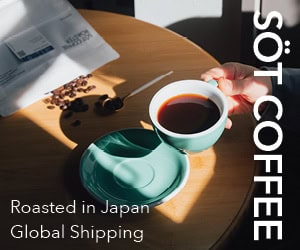Coffee aficionados often assume that coffees from various origins taste different purely
because they are grown in different climates and soils or produced by different botanical
varieties of Coffea arabica.
Obviously both assumptions are true. However, we often overlook the influence
of how coffee beans are processed, or stripped of their fruit and dried. This procedure has
a key impact on how coffees ultimately taste in the cup. I’m particularly convinced that
the unique cup characteristics of traditional Sumatra coffees — their heavy body and deep
dimension & owe more to the unorthodox methods Sumatrans use to remove the fruit
from the coffee and dry it than they do to characteristics imparted by soil, climate and
botany. Certainly Sumatras processed by the standard large-scale wet method, like Gayo
Mountain Washed, tend to medium body and a rather delicate flavor when compared to
the heavy-bodied, tawny-beaned Mandhelings and Lintongs processed and dried by
traditional methods.
Infinite Nuance
Thirty years ago many of us in the infant specialty coffee business assumed that there
were only two ways to process coffee: by the dry method, in which the coffee beans or
seeds are dried inside the fruit, or by the wet (or washed) method, in which the fruit is
removed from the bean in careful steps before drying. In fact, there appears to be an
almost infinite variety of nuances, compromises and variations in processing, almost all
of which affect flavor.
And Sumatra is home to several of these compromises and variations. The many
mysteries and intricacies f Sumatra processing and drying procedures are too complex
and problematic to go into in detail here. But it does appear that all Sumatra arabica
coffees have their skins removed immediately after picking. In other words, no Sumatra
arabicas are dry-processed in the traditional sense of the term, meaning none are dried in
the whole fruit as are traditional Brazils, Ethiopia Harrars, and Yemens.
The Sumatra Processing Mystery
But what happens to Sumatra coffee after the skins are removed from the fruit but before
the beans are dried? All of the small Sumatran farmers I visited some years ago
proceeded using a simple, backyard wet method. After removing the skins from the
coffee fruit using simple (often homemade) machines, they fermented the slimy beans
overnight without adding water (a procedure called dry-fermenting), then washed off the
ferment-loosened fruit pulp in water from a creek or well before putting the coffee out to
dry. This simple procedure technically qualifies these coffees as washed or wet-processed
coffees.
However, the simply backyard scrubbing hardly removed all of the pulp, and
some remained in contact with the beans, promoting a ferment taste that, in traditional
Sumatras, can range from fruity, chocolaty and complex to flat-out rotten.
(By the way, several second-hand accounts sent to me by others describe
Sumatran farmers who remove the pulp from the skinned fruit by either rubbing the beans
on a mat or rubbing them with sand. It is not clear whether this mat-or-sand removal
process happens after the coffee is dried with the pulp still attached (which would make
these coffees semi-dry processed), or after the pulpy coffee has been fermented
overnight, as I witnessed.)
Finally, and still further complicating the picture, are at least one or two larger
Sumatra mills that process the coffee by what we might call the “classic” semi-dry
method. I am told that these mills proceed much like large mills do in parts of Brazil:
remove the skins from the coffee fruit, dry the beans in the slimy pulp, and then remove
both dried pulp and inner skins by mechanical milling.
Three Roads to the Same Cup
Regardless of which of these three methods is pursued, note that the sweet, fruity pulp
remains in contact with the bean without dilution for a considerable period of time,
undoubtedly contributing to the deep-toned, heavy-bodied profile of traditional Sumatras,
while blunting any tendencies to dry, acidy brightness.
The Final Flavor Twist
For a final flavor twist, we have the unorthodox Sumatran drying procedures. Small-
grower Sumatra coffees, rather than being put out to dry once and decisively, appear to
be dried in stages, first for a few hours by the growers, then for a day or two longer by a
middleman, then for a third and final time in the ort city of Medan by exporters. This
haphazard drying procedure is undoubtedly one source of the hard, mildewed taste of
inferior Sumatras, since it allows plenty of time for development of musty or other hard
taste defects.
On the other hand, it also might also be a factor in the development of the heavy
body of the best traditional Sumatras. Furthermore, when the musty tones are mild and
layered atop a basically sweet cup, we get the intriguing flavor notes that many
professionals and aficionados admire in traditional Sumatras: malt, spice, smoke, new
leather, pipe tobacco, and (when the musty coffees have been dried directly on the
ground) leaf, humus and earth.
The Scotch Whiskeys of Coffee
All of this layering of fermented fruit and rich mildew-cum-spice, plus a syrupy
mouthfeel and full body, are what Alfred Peet and Erna Knutsen valued when they first
introduced premium Sumatras to the fledgling American specialty coffee industry many
years ago. To me, the proper analogy for this great origin is Scotch whiskeys and their
peaty, slightly fruity, smoky complexity, not wines. Save the wine analogy for Costa
Ricas or Kenyas.
So far as I can tell, this richly ambiguous complex of flavor notes continues to be
what American professionals and aficionados look for in Sumatras. I hope the traditional
Sumatra character survives the well-meaning, thankfully sporadic efforts of commodity
coffee people and cupping purists to improve it out of existence. So far as I am
concerned, we should be figuring out how to refine and systematize the traditional
Sumatra character rather than turning Sumatras into a weak imitation of other origins.
Certainly fine Sumatras attract higher wholesale prices than most clean, high-grown
Central America coffees. It’s not because the Sumatras better, but because they impress
in a different, and often fascinating, way.











